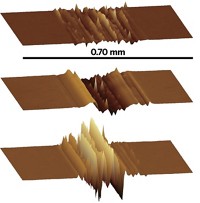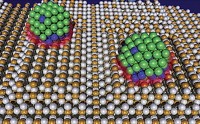Advertisement
Grab your lab coat. Let's get started
Welcome!
Welcome!
Create an account below to get 6 C&EN articles per month, receive newsletters and more - all free.
It seems this is your first time logging in online. Please enter the following information to continue.
As an ACS member you automatically get access to this site. All we need is few more details to create your reading experience.
Not you? Sign in with a different account.
Not you? Sign in with a different account.
ERROR 1
ERROR 1
ERROR 2
ERROR 2
ERROR 2
ERROR 2
ERROR 2
Password and Confirm password must match.
If you have an ACS member number, please enter it here so we can link this account to your membership. (optional)
ERROR 2
ACS values your privacy. By submitting your information, you are gaining access to C&EN and subscribing to our weekly newsletter. We use the information you provide to make your reading experience better, and we will never sell your data to third party members.
Materials
Firing Up The Tank With Nanoparticles
May 5, 2008
| A version of this story appeared in
Volume 86, Issue 18
In an attempt to make liquid fuels more energy efficient, scientists have found that adding aluminum or aluminum oxide nanoparticles to diesel fuel improves its ignition properties (Nano Lett., DOI: 10.1021/nl080277d). In simple hot-plate experiments, Arizona State University mechanical engineer Patrick E. Phelan and coworkers found that diesel fuel containing 0.1% aluminum or aluminum oxide nanoparticles ignites more readily at lower temperatures than pure diesel. The researchers suspect that adding nanoparticles to diesel improves the fuel's radiative properties and its heat- and mass-transfer capabilities. The nanoparticles increase the probability that a single drop of the fuel will ignite at just above 700 ??C. The probability increases from about 15% for pure diesel to between 50 and 60% for nanoparticle-enriched diesel. Phelan's group also looked at two different sizes of Al2O3 particles and found that 50-nm particles were slightly better at getting diesel to ignite than 15-nm particles but only at the lower range of temperatures tested. Envirox, a cerium oxide-based catalyst nanoparticle that's reported to boost fuel efficiency, is already on the market from nanomaterials firm Oxonica.






Join the conversation
Contact the reporter
Submit a Letter to the Editor for publication
Engage with us on Twitter